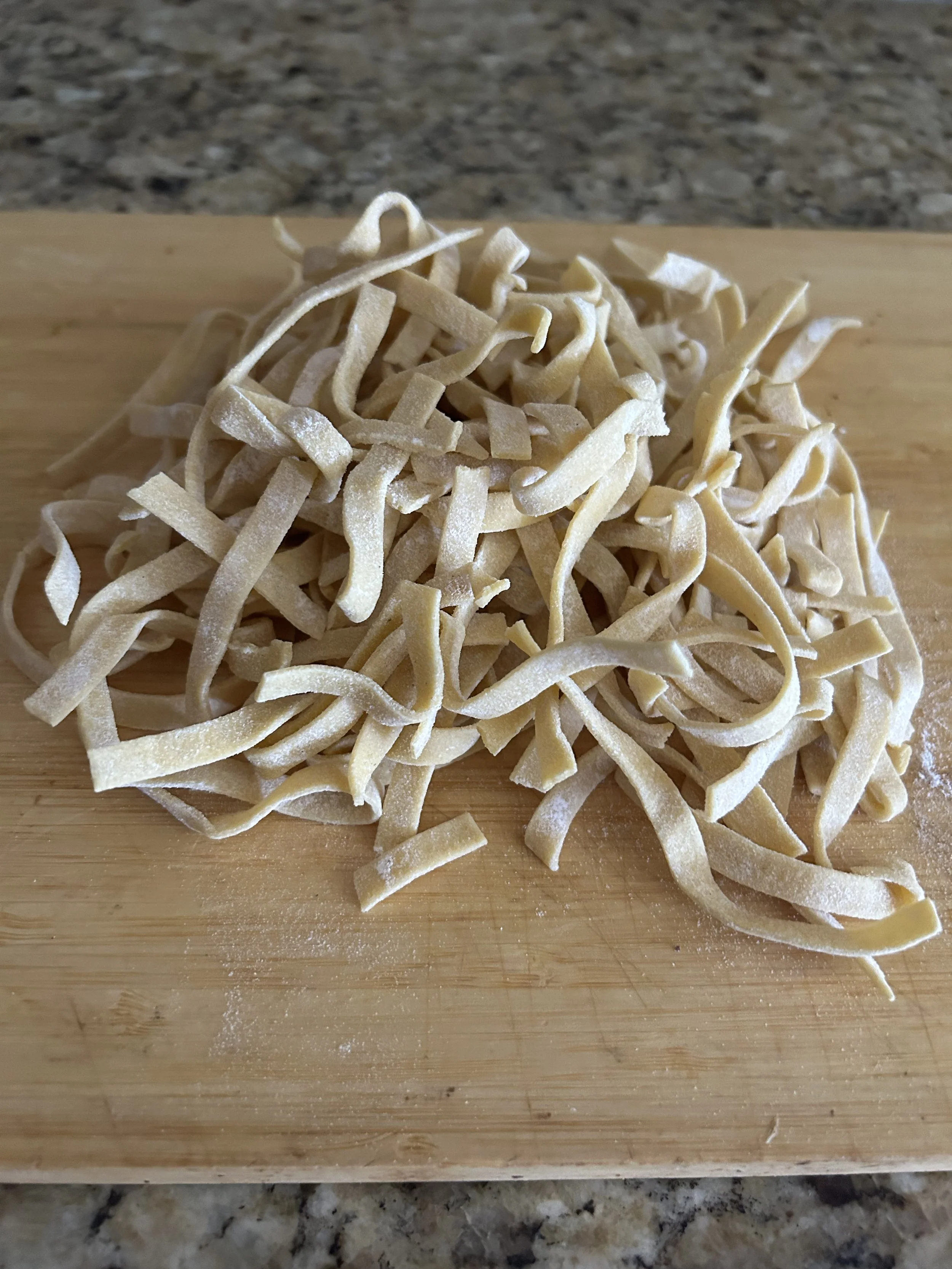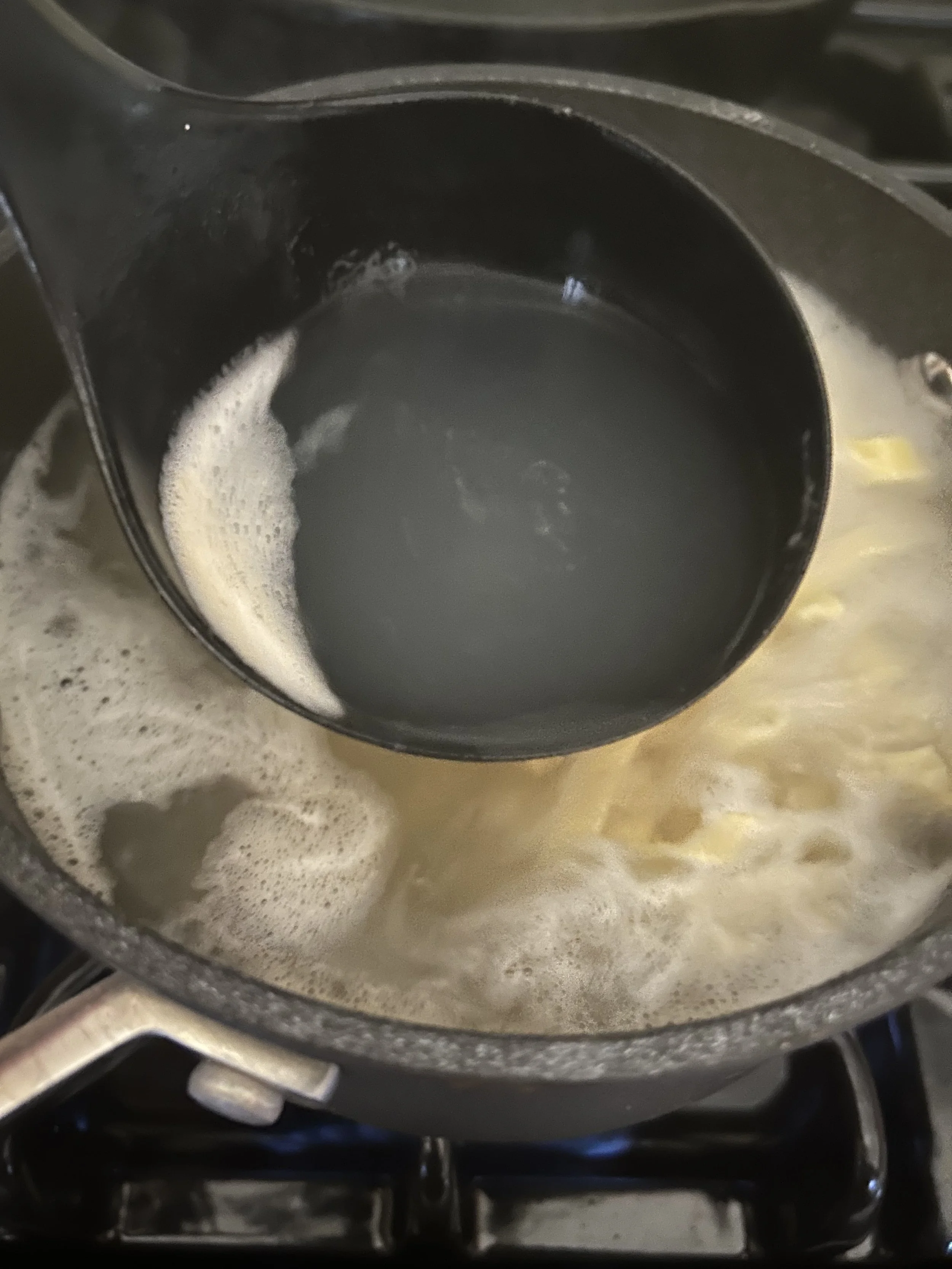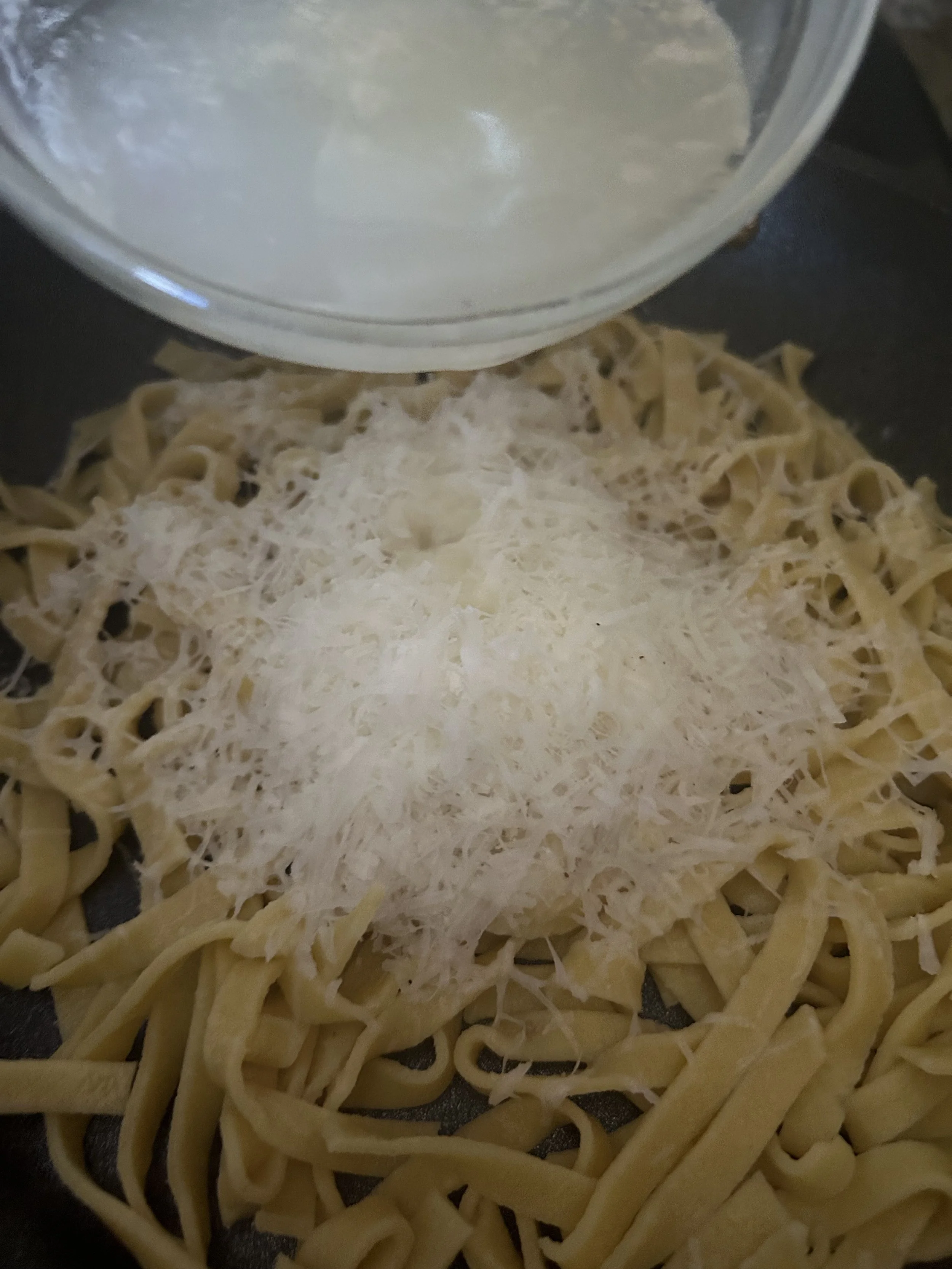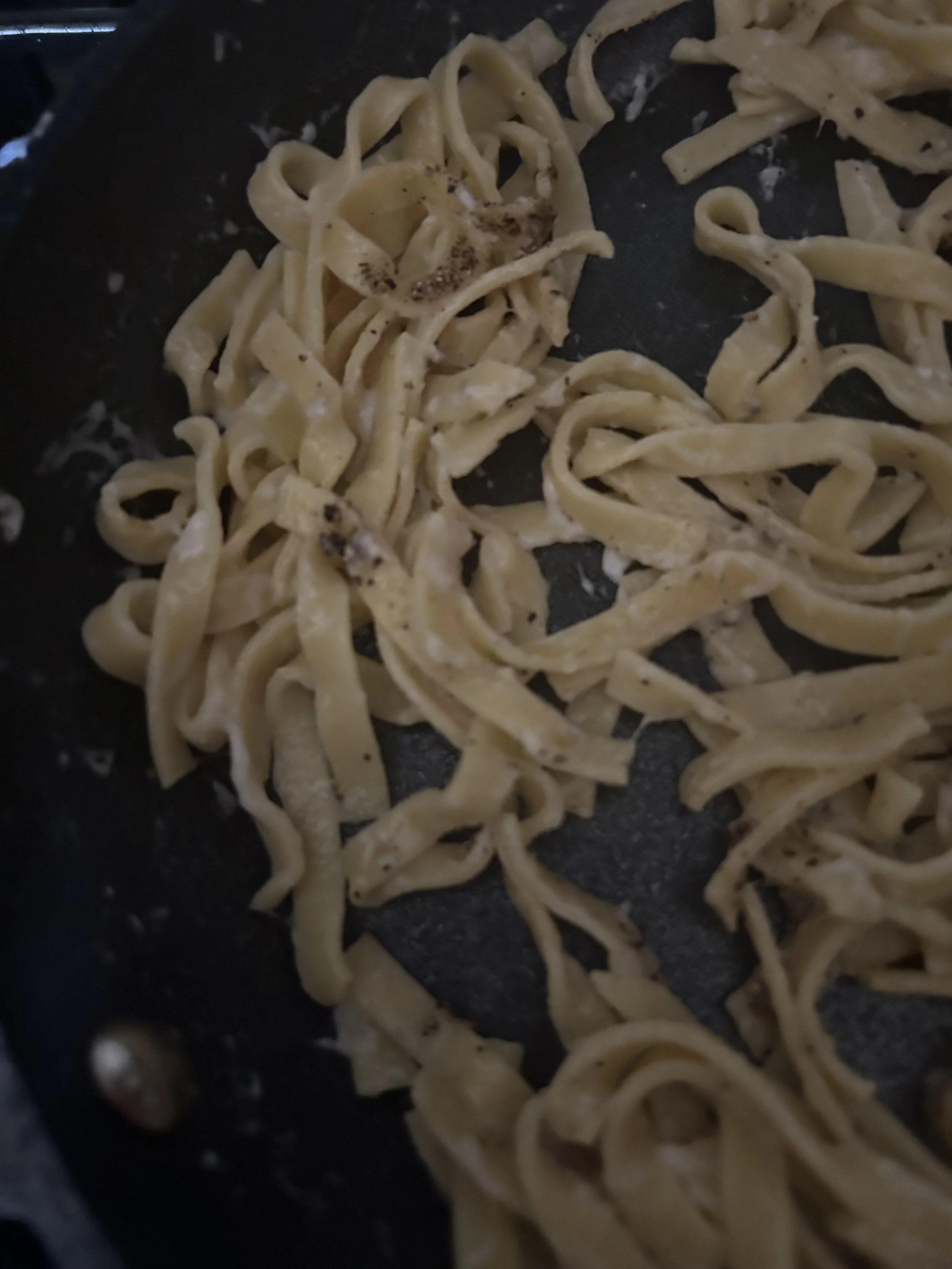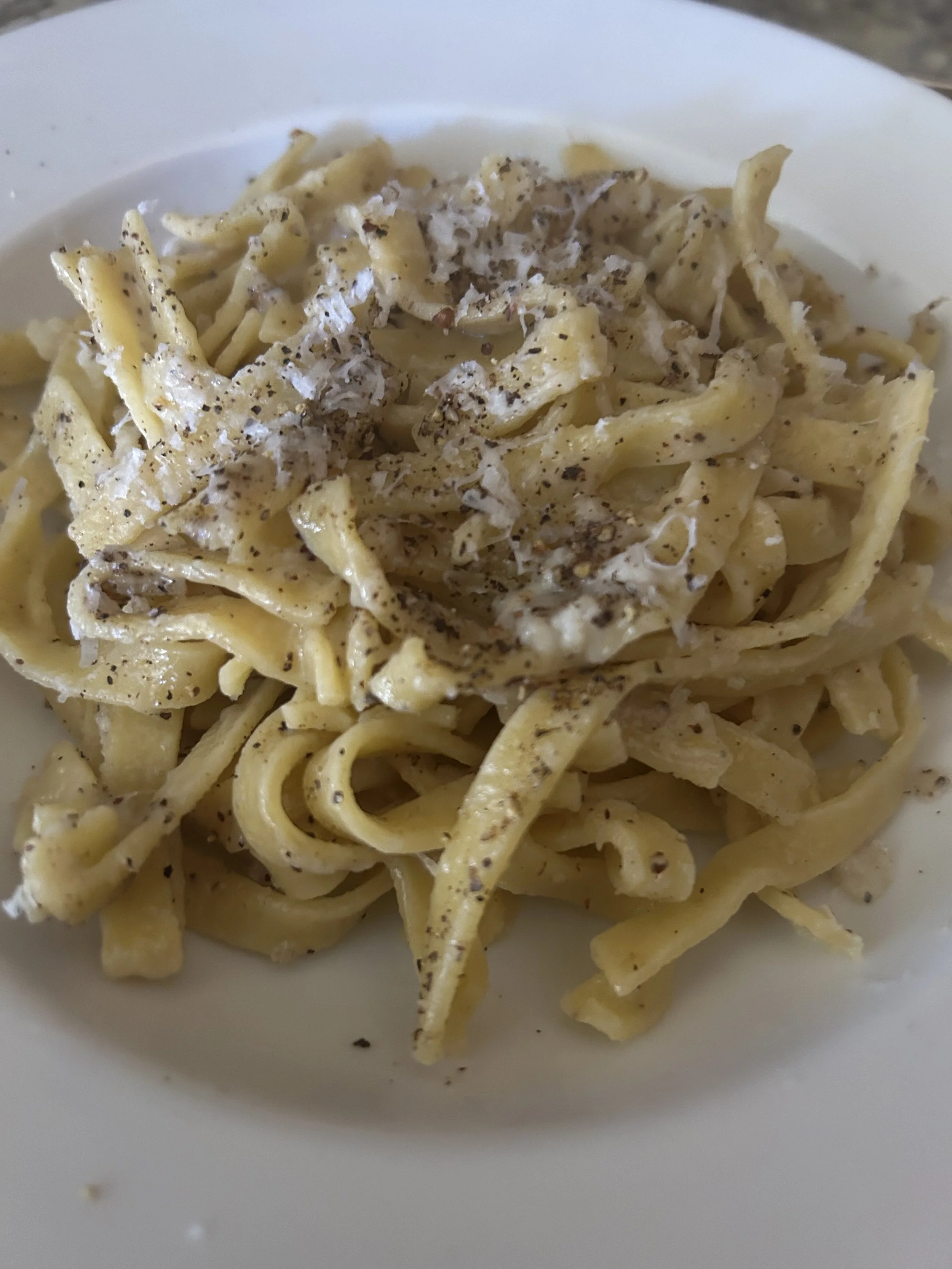Deconstruct: Cacio e Pepe
Today, I am going to talk about a dish that perfectly embodies the simplistic beauty that is traditional Italian food, I am going to be making Cacio e Pepe.
Cacio e Pepe means ‘cheese and pepper’ and is a pasta dish done with lots of cheese and black pepper, all of which come together for a salty, nutty, peppery bite that transports you to the streets of Italy with every bite.
You can think of it as a fancier macaroni and cheese.
It’s a dish that seems simple to make but is a bit hard to execute properly, but I will share some of my helpful tricks and tips on how to make perfect Cacio e Pepe at home.
Before I share how to make Cacio e Pepe, I will first deconstruct the dish and describe how the trio of ingredients and flavors of Cacio e Pepe come together to form such an iconic dish.
Pasta
I suppose this isn’t really a pasta dish without this Italian staple.
The pasta provides a starchy structure and solid base that can pick up all of that cheese and pepper and transport it to your mouth, without it you would basically be eating a bowl of peppery cheese.
Today, I’ll be using some fresh fettuccine pasta that I made previously and left to dry overnight so it has as many uses as dry pasta, but when cooked it has the signature texture that only fresh pasta can provide.
That being said, there is nothing wrong with using boxed pasta for this dish.
Black Pepper
The ripened fruit of a plant in the Piperaceae family, black pepper provides a signature nutty, floral flavor along with a good amount of peppery spice that pairs beautifully with the salty cheese for an iconic salt and pepper taste.
For Cacio e Pepe, a coarse-ground pepper is ideal as you want tiny crunchy bits of pepper to munch on as you eat the dish.
And you do need quite a bit of it, I would say about a tablespoon for every 3-ounce serving of pasta that you plan on using. It sounds like a lot, but that peppery bite is part of what makes Cacio e Pepe so iconic.
Also, as I do with everything, I also strongly suggest buying whole peppercorns and grinding them yourself as the flavor of pre-ground pepper is quite faded.
Cheese
It’s no secret that cheese tastes amazing with pasta. We Americans have a whole dish based around this iconic pairing.
For Cacio e Pepe, tradition tells us to use pecorino romano.
Pecorino is a firm, salty, crumbly cheese similar to parmesan, but the main difference is that pecorino is made with sheep’s milk while parmesan is made with cow’s milk, that sheep’s milk giving the pecorino a tangy, nutty flavor.
If it’s not made with sheep’s milk, then I’m sorry but it’s not really pecorino. It’s parmesan.
That being said, if you don’t have pecorino or can’t find it, then good-quality parmesan will work well too.
Not those perfectly shaped wedges you see with other deli cheeses or, god forbid, that dry pre-grated stuff! I’m talking about a real chunk of cheese that was wedged off of an actual parmesan wheel.
Ok, looking at these three ingredients laid out on this little board, you have to wonder if anything is missing…go on, I’ll give you a second to think about that…
That’s right, we have nothing to bind these three ingredients together and help form a beautiful sauce for the pasta, for that we look to an Italian chef’s best friend, pasta cooking water.
It is a fact that the water that pasta is cooked in is like liquid gold for any chef. As pasta cooks, some of the starch kept inside does seep out into the water, and this starch can be used to help loosen sauces and provide a glossy, pretty appearance.
It also contains salt to add a final dose of seasoning to the sauce.
In the case of Cacio e Pepe, the pasta water quickly melts down the grated pecorino and helps it and the pepper grab onto the pasta, so when you sit down to eat it the cheese will be hugging the pasta like a thin blanket, so you get it’s flavor with every bite.
This is also where this dish can get tricky. If you add too much water, then it’ll taste watery, add too little, and it’ll be too dry, if you don’t stir it enough then the cheese and pasta will clump up into one mound.
But relax, if you follow my simple recipe, then
Since there is no flour, butter, or cream involved, this isn’t going to give us much of a creamy sauce like we expect with mac and cheese or alfredo, but I promise you that once you give this dish a shot, you will find that well-worth it.
Alright, now that we have the ingredients down, let’s get cooking!
Cacio e Pepe
Servings: 2
6 ounces of fettuccine pasta, fresh or dried.
1/2 cup of grated pecorino romano cheese, plus more for garnish
2 tablespoons of coarse-ground black pepper, plus more for garnish
To get started, lower the pasta into a pot of salted boiling water and let that cook until it’s nice and al dente, it should take about 2 minutes for fresh pasta and 6 minutes for dried.
Reserve about 1/2 cup of the pasta’s cooking water, then drain.
Dump the pasta into a hot, dry sauté pan then add 1/4 cup of the cooking water. Once that starts to simmer, add the pecorino and black pepper and stir until the water is almost evaporated and the cheese is clinging to the pasta, adding more cooking water if needed.
You want to add enough water to allow the cheese to melt and grab onto the pasta, but not so much that the pasta ends up swimming in its own water.
As mentioned, this won’t form a creamy, velvety sauce like with alfredo, but give it a taste and I can guarantee that once you taste it, you will be thrilled.
Divide everything into bowls and garnish with more pecorino and pepper.
Enjoy!


